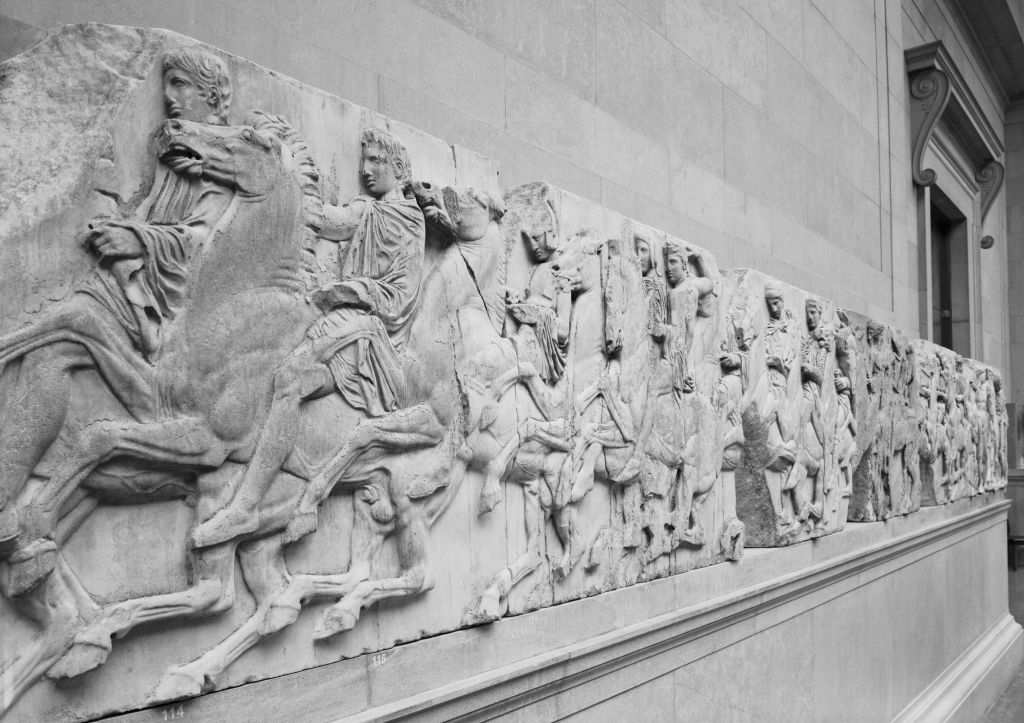Art or Porn? A Closer Look at Michelangelo’s ‘David,’ the Sculpture Behind the Florida Charter School Controversy
A charter school in Tallahassee, Florida, recently made the news after parents complained about the inclusion of a sculpture by Italian Renaissance artist Michelangelo in a sixth-grade art-history course. As a result, in late March the school’s principal resigned from an institution that is, ironically, dedicated to classical education.
The sculpture depicts the biblical David holding the sling with which he will kill Goliath. At issue here was its heroic full frontality, which unapologetically exposes David’s family jewels. (The Florentine museum that houses the statue, one of the most famous and admired artworks in the world, has invited the school’s students and their parents to come view the work in person; Florence’s mayor has extended a similar invite to the former principal.)
Though enraged custodians of public decency might not know this from reproductions, David’s genitalia occupy a loud and proud place in Michelangelo’s composition when seen in real life. The sculpture, measuring a colossal 17 feet high while perched a pedestal measuring nearly half that, features a penis that, while smallish in proportion to the figure, cannot be ignored.
An embodiment of youthful athleticism informed by ancient Greek statuary, David indubitably resides at the summit of sculptural achievement. But how and why did it come to exist? It’s a surprisingly long story, one that begins well before Michelangelo worked on the piece, starting in 1501 and finishing in 1504.
In 1464 the Overseers of the Office of Works of Florence Cathedral commissioned the sculptor Agostino di Duccio to create a statue of David. A gigantic block of marble was wrested from the famous quarry at Carrara and transported to Florence, where Di Duccio began work. But he quit two years later, having only roughed out the legs, feet, torso, and some drapery. The project lay fallow for a decade until another artist Antonio Rossellino took up the chisel, but he was fired shortly thereafter.
For the next 26 years, the block lay exposed to the elements outside the cathedral’s workshop, until a call was put out for artists to complete the job. Among the names considered was Leonardo da Vinci’s, though the gig ultimately went to Michelangelo.
The sculpture was brought to fruition, but there was a problem: The statue was originally intended for the cathedral roof—which accounts for David’s immense scale, as it was meant to be seen from afar. But it weighed six tons, far too heavy for hoisting. Instead, it was installed next to the entrance to the Palazzo Vecchio in June of 1504. In 1873, it was moved indoors to the Accademia Gallery, when it was determined that cracks were forming as a result of the site’s uneven ground. A replica took its place in the piazza.
In 1991, a deranged artist named Piero Cannata, attacked the sculpture with a hammer and managed to smash one of David’s toes before being stopped. He later said he was acting on the orders of a painter’s model from 16th-century Venice.
Today’s perpetrators of moral panic would be likely be appalled to learn that Michelangelo was homosexual, and that David arguably represents a proto-expression of queer aesthetics. But no amount of censorship will alter the fact that David lets it all hang out.


